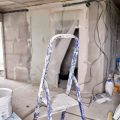Introduction to Gutter Guard Systems
Gutter guard systems are specialized products designed to prevent debris such as leaves, twigs, and dirt from clogging residential gutter channels. For many American homeowners, keeping gutters clear is a persistent challenge—especially in regions with heavy rainfall, frequent storms, or abundant tree coverage. Left unchecked, blocked gutters can lead to costly water damage, foundation issues, and even landscape erosion. This has driven a growing interest in gutter guards as a potential solution to reduce the frequency of gutter cleaning and improve home maintenance efficiency. The decision to install gutter guards often hinges on local climate conditions and the types of trees surrounding a property. For example, homes situated under maple or pine trees may experience more significant leaf and needle accumulation compared to those in arid climates with less foliage. Understanding these environmental factors is crucial when evaluating whether investing in a gutter guard system is worthwhile for your specific location.
Types of Gutter Guard Solutions
When considering whether gutter guard systems are a worthwhile investment, its essential to understand the different types of solutions available in the American market. Homeowners can choose from a variety of materials and designs, each offering distinct advantages and limitations. The four most popular gutter guard types in the US are mesh, screen, reverse curve, and foam inserts. Below is an overview of these options:
| Type | Material | Design Features | Pros | Cons |
|---|---|---|---|---|
| Mesh Guards | Stainless steel or aluminum | Fine metal mesh covers gutter, allowing water through while blocking debris | Highly effective at keeping out small debris; durable; low maintenance | Higher upfront cost; professional installation recommended for best fit |
| Screen Guards | Plastic or metal | Perforated screens laid over gutters to block leaves and larger debris | Affordable; simple DIY installation; readily available at hardware stores | Can clog with smaller debris; less durable than mesh or metal guards |
| Reverse Curve Guards | Metal or plastic with curved edge | Covers gutter, guiding water into gutter via surface tension, while debris falls off edge | Effective against large debris; reduces cleaning frequency significantly | May not perform well in heavy downpours; more visible from the ground; can be pricier |
| Foam Inserts | Synthetic foam material | Pores allow water flow while filling the gutter channel to block debris accumulation | Easy DIY installation; inexpensive; minimal tools required | Tends to degrade over time; can support mold/mildew growth if not maintained regularly |
The selection of a gutter guard system often depends on regional climate, tree coverage around your home, budget, and desired maintenance frequency. For example, mesh guards are particularly popular in areas with many pine trees due to their ability to filter fine needles, whereas foam inserts may appeal to homeowners looking for a quick and affordable fix. Understanding these differences is crucial when evaluating which solution best fits your homes needs and whether the investment aligns with your long-term goals.

3. Installation Methods and Considerations
When evaluating gutter guard systems, homeowners are often faced with the choice between DIY installation and hiring a professional. Each approach carries its own technical implications that can impact both short-term convenience and long-term performance.
DIY vs. Professional Installation
Many gutter guard products on the market are marketed as DIY-friendly, featuring snap-in or slide-on designs. These options tend to be less expensive upfront and can be installed with basic hand tools, making them attractive for homeowners looking to save on labor costs. However, precise measurement, correct alignment, and secure fastening are critical for preventing leaks or gaps that compromise the system’s effectiveness. On the other hand, professional installation ensures expert assessment of your home’s drainage needs and proper integration with existing rooflines. Pros have access to specialized materials (like custom-fitted guards) and equipment for hard-to-reach areas, which can be especially important for multistory homes or roofs with complex geometries.
Compatibility with Existing Gutters
Not all gutter guards are universally compatible; factors like gutter width (commonly 5” or 6” in U.S. residential construction), material (aluminum, steel, vinyl), and mounting method must be considered. Some systems require screwing into the fascia or under the shingles, while others rest inside or clip onto the gutter lip. It’s essential to check manufacturer guidelines to avoid voiding roof warranties or damaging your gutters during installation. If your existing gutters show signs of sagging, rusting, or poor pitch, these issues should be addressed before installing any protective system to ensure optimal performance.
Structural Considerations for Different Roof Types
The architectural style and material of your roof can influence both product selection and installation technique. For example:
Asphalt Shingle Roofs
Most common in American homes, these allow for various attachment methods but caution is needed not to break the shingle seal or puncture the waterproof membrane beneath.
Metal Roofs
Require non-corrosive fasteners and guards that account for thermal expansion and contraction. Snow retention features may also be necessary in northern climates.
Tile or Slate Roofs
These fragile materials require specialized brackets and minimal disturbance during installation to prevent cracking or breakage.
By taking these technical factors into account—whether opting for a weekend DIY project or hiring certified installers—homeowners can maximize their gutter guard investment’s lifespan and effectiveness while minimizing risks to their property.
4. Performance, Maintenance, and Lifespan
When evaluating gutter guard systems, understanding the performance, common maintenance needs, and overall lifespan of each type is essential for American homeowners considering this investment. Gutter guards come in several varieties—screen, micro-mesh, reverse curve (surface tension), brush, and foam inserts—each with unique strengths and vulnerabilities.
Performance Comparison by Gutter Guard Type
| Type | Debris Blocking Effectiveness | Water Flow Rate | Ice Dam Risk | Lifespan (Years) |
|---|---|---|---|---|
| Screen | Moderate – blocks leaves, struggles with pine needles | Good in moderate rain; clogs in heavy debris zones | Moderate risk if clogged | 5-10 |
| Micro-Mesh | High – filters out fine debris (even shingle grit) | Excellent; minimal clogging if maintained | Low to moderate risk | 10-20+ |
| Reverse Curve | Good for large debris, some issues with smaller particles | High in most conditions; can overflow in torrential rain | Higher risk if ice builds on surface curve | 10-20+ |
| Brush | Poor to moderate; small debris gets trapped easily | Poor when full of debris; requires frequent cleaning | Low risk (open design), but clogs can cause backups | 5-7 |
| Foam Insert | Poor; traps both large and small debris over time | Poor as foam becomes saturated/clogged quickly | Low ice dam risk but high maintenance frequency needed | 2-5 |
Typical Issues Encountered with Gutter Guards
- Clogging: Even top-tier micro-mesh guards can become clogged with oil residue from asphalt shingles or very fine pollen. Cheaper screen and brush types are especially prone to blockages from pine needles or seed pods.
- Ice Dams: In colder U.S. regions, water can freeze at the edge of gutter guards—especially on reverse curve designs—leading to ice dams that may damage roofing or gutters.
- Pest Intrusion: Open designs like brush and foam inserts can invite nesting by birds or insects.
- Mold & Mildew: Foam inserts and clogged screens retain moisture, increasing the chance of mold growth inside the gutter channel.
Maintenance Frequency by Type
| Type of Gutter Guard | Recommended Inspection Frequency (per year) | Main Maintenance Tasks |
|---|---|---|
| Screen | 2-3 times | Sweep off surface debris; lift to check for clogs underneath. |
| Micro-Mesh | 1-2 times | Spray clean with a hose; check seams for blockages. |
| Reverse Curve | 1-2 times (more after storms) | Cleans surface edge; ensure water channels remain open. |
| Brush/Foam Insert | 3-4 times or more during heavy leaf seasons | Remove guard to clear trapped debris and rinse thoroughly. |
Lifespan Considerations and Warranty Coverage
The effective lifespan of gutter guard systems depends on both material quality and local conditions. Most reputable brands offer warranties ranging from 5 years (for basic screen) up to 25 years or even lifetime coverage for high-end micro-mesh or professionally installed reverse curve systems. However, actual service life may be shortened by severe weather events, improper installation, or neglected maintenance. Homeowners should review warranty terms carefully to ensure coverage aligns with their region’s climate challenges—such as snow load in northern states or heavy pollen in the Southeast.
The Bottom Line on Upkeep vs. Long-Term Value
Selecting the right gutter guard involves balancing up-front cost against ongoing maintenance demands and expected longevity. While premium options like micro-mesh offer superior long-term protection with minimal upkeep, budget-friendly solutions may require more hands-on care—and ultimately higher replacement frequency. Understanding these factors helps American homeowners determine whether gutter guards truly deliver lasting value for their specific home environment.
5. Cost Analysis and ROI
When evaluating gutter guard systems, American homeowners should consider not just the initial investment but also long-term financial implications. The upfront cost for professionally installed gutter guards typically ranges from $7 to $15 per linear foot, depending on material quality and complexity of installation. While this represents a notable expense—often totaling $1,200 to $2,500 for an average home—it is essential to weigh these costs against ongoing savings.
Long-Term Maintenance Savings
One of the most compelling arguments for gutter guards is their potential to reduce or eliminate the need for seasonal gutter cleaning, which can cost $150–$300 per service if done professionally. Over five to ten years, these savings can accumulate significantly, especially in regions with heavy tree coverage or frequent storms. Additionally, by preventing blockages and overflow, gutter guards can minimize water damage to fascia boards, siding, and foundations—avoiding costly repairs that could run into thousands of dollars.
Impact on Home Value
While installing gutter guards may not directly increase your homes market value in the way a kitchen remodel might, they do contribute positively to curb appeal and perceived home maintenance. Real estate agents often note that prospective buyers appreciate low-maintenance features. In competitive markets or areas prone to heavy rainfall, having gutter guards already installed can be a selling point that differentiates your property from others.
Insurance Considerations
Some homeowners insurance providers may offer slight premium reductions for homes equipped with preventative features like gutter guards, especially in flood-prone areas or where water intrusion claims are common. While savings are typically modest, the more significant benefit comes from reducing the likelihood of claims related to water damage—a factor that can help keep long-term insurance costs in check.
Conclusion: Evaluating ROI
The return on investment for gutter guard systems depends on local climate, surrounding vegetation, and how much you currently spend on maintenance or repairs. For many American homeowners—particularly those in leafy suburbs or storm-prone regions—the combination of reduced upkeep costs and added peace of mind makes gutter guards a sensible long-term investment.
6. Regional Factors and Homeowner Experiences
When considering the effectiveness and value of gutter guard systems, regional factors play a significant role. Across the United States, local weather conditions, tree varieties, and even municipal building codes impact both the choice of gutter guards and their long-term performance. Homeowners from different regions report varying experiences that highlight the importance of tailored solutions.
Weather Patterns
In the Pacific Northwest, frequent rainfall and moss growth challenge gutter guards to prevent water overflow and clogging by organic debris. Conversely, in arid Southwestern states, dust accumulation can be a bigger issue than leaves or pine needles. In areas prone to heavy snowfall, such as the Midwest and Northeast, ice damming is a concern—leading some homeowners to combine gutter guards with heated cable systems for winter protection.
Tree Varieties
The type of vegetation surrounding a home heavily influences gutter maintenance needs. For example, Southern homeowners often deal with live oak leaves and Spanish moss, which can slip through mesh screens if not properly sized. In contrast, Northeastern properties dominated by maple or birch trees may experience fewer issues with fine debris but still require robust guards against seasonal leaf fall. Pine needles are notorious throughout the Rocky Mountain region for slipping through larger openings in some guard designs.
Building Codes and HOA Regulations
Local building codes sometimes dictate minimum requirements for rainwater management, including permissible types of gutter guard materials or installation methods. Homeowner Associations (HOAs) in planned communities may enforce aesthetic guidelines or restrict certain products altogether. Feedback from US homeowners indicates that verifying code compliance before installation can prevent costly modifications down the line.
Insights from US Homeowners
User reviews on major platforms like Angie’s List and HomeAdvisor reveal that regional adaptation is key. For example, Florida residents praise micro-mesh systems for handling both torrential rains and tiny palm fronds, while Colorado homeowners appreciate reverse-curve models for shedding pine needles but caution about snow buildup. Many note that reputable local installers offer valuable insights based on firsthand experience with regional challenges—often recommending specific brands or custom-fit solutions over generic big-box options.
Takeaway: Local Adaptation Matters
The consensus among US homeowners is clear: gutter guard effectiveness hinges on aligning product choice with local environmental demands and regulatory requirements. Consulting with regional experts and neighbors who have faced similar conditions can provide practical guidance and help ensure a worthwhile investment.
7. Conclusion: Are Gutter Guards Worth It?
When weighing the investment in gutter guard systems, US homeowners should carefully consider both the advantages and potential limitations. Gutter guards offer significant benefits such as reduced maintenance, prevention of clogs and water damage, and enhanced home protection—especially in regions with heavy foliage or frequent storms. On the flip side, drawbacks include initial installation costs, potential compatibility issues with existing gutters, and the possibility that not all debris will be blocked, necessitating occasional cleaning.
Key Decision-Making Factors
- Regional Environment: Homes surrounded by mature trees or located in areas prone to severe weather typically see greater value from gutter guards.
- Budget: Upfront costs can vary widely based on material quality and installation method. DIY options may save money but require more effort and technical skill.
- Gutter Condition: Older or damaged gutters may need replacement or repair prior to guard installation to ensure system effectiveness.
Recommendations for Homeowners
If you frequently deal with clogged gutters, water overflow, or are seeking to minimize routine home maintenance, installing a quality gutter guard system can be a smart investment. For maximum return, select reputable products rated for your specific climate and debris type, and consider professional installation for optimal performance and warranty coverage. However, if your property has minimal tree coverage or you’re comfortable with occasional gutter cleaning, traditional open gutters may suffice. Ultimately, the decision should balance your homes unique needs, your tolerance for ongoing maintenance, and your long-term budget priorities.


